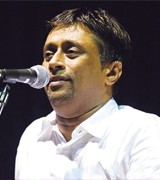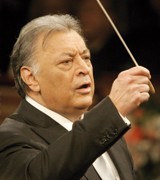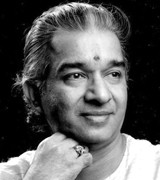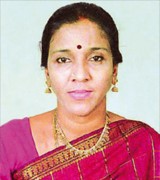COVER STORY
MUSIC SEASON 2014-15 - Of stars, seniors and veterans
T.T. NARENDRAN

One musician who enjoys a star status in the contemporary world of Carnatic music is Sanjay Subrahmanyan. There are ardent fans who track him down to whereever he is featured. Rarely does one find a vacant seat in the auditorium when he sings. His repertoire never ceases to increase. His packaging and presentation are, perhaps, the best today in this field. A musician’s ability to stay popular in the field over long years depends on his overcoming staleness. Sanjay succeeds by continuously unearthing archival compositions of yesteryear and providing a bag of surprises. His concert at the Music Academy opened with an Ata tala varnam of Patnam Subramania Iyer in Darbar. It drew attention right away by its rarity and by the power he imparted to the song. His alapana of Sreeranjani (Sree Ramachandro, Dikshitar) showed his insight into the raga. Another gem from the archives was Sarasa dala nayana (Todi, Mayavaram Viswanatha Sastri). This kriti on Muruga showed the composer’s skill with swaraksharas.
SPECIAL FEATURE
ZUBIN MEHTA - Unique among today’s conductors
MANOHAR PARNERKAR

Why is Zubin Mehta unique among today’s conductors? He is the only Indian, and one of only two Asians, to make it to the elite group of international conductors, Seiji Ozawa (b. 1935), the China born Japanese-US conductor being the other one. Mehta is one of the few conductors who have distinguished themselves in both orchestral concert music as well as opera music. His operatic career which began with Puccini’s Tosca he conducted in Montreal, in 1964, continues unabated.
Mehta is one of the few opera conductors to have crossed the 50-year mark, and a rare one to have conducted at the four most celebrated opera houses in the world namely, La Scala (Milan, founded in 1778), Covent Garden (London, built in 1858), Bayreuth (in a small town in Germany, newly opened in 1876, and traditionally associated with and managed by the Wagner family), and Metropolitan Opera or Met, for short (New York, opened in 1883). These four opera houses have been to opera devotees the world over what the char dhams namely, Badrinath, Dwaraka, Puri and Rameswaram, have been to Hindu pilgrims.
FIRST PERSON
A sabdam by Shanmugam
V.P. DHANANJAYAN

Every Bharata Kalanjali production or item has an interesting anecdote attached to it. Bharata Kalanjali’s special item, the Shanmukha Sabdam, performed by many dancers of other schools too is also one such song. Many believe it is an old traditional composition. It is not.
Way back in 1974, the newly established Bharata Kalanjali was functioning from a small, thatched, rented cottage at No.7, 5th Cross Street, in Shastri Nagar. One day while I was in the garden with my little son Sanjay, a stranger dressed in rags came up to the gate and greeted me with “Vanakkam Ayya” in Tamil. I reciprocated his greeting and because of his rather unkempt looks I asked him to be seated on the cane chair outside instead of inviting him into the house. I sat down beside him. He first introduced himself as Shanmugam, then adding the prefix “Semponnarkoil Shanmugam” he said, he was working in South Indian Shipping Corporation, Chennai Port. His demeanour made it hard for me to believe him, but he started speaking in chaste Tamil and took me by surprise. I realised he was no ordinary man.
FROM THE WINGS
CONVERSATIONS WITH MUSICIANS IN CLASSICAL DANCE - Radha Badri
ANJANA ANAND

A Kalakshetra alumnus who has been a vocalist for Bharatanatyam for three decades now, Radha Badri needs no introduction. A talented artist who could have easily made a mark as a musician on the concert platform, Radha Badri has been an asset to the Bharatanatyam field. She shares her experiences with Sruti, speaking with fondness and nostalgia about her alma mater.
You were exposed to a lot of Carnatic music from a young age. Tell us about your early experience.
I was born in Tiruvaiyaru. My grandfather was in charge of the Tyagaraja aradhana and a galaxy of stars stayed with us while performing during the festival – M.L. Vasanthakumari, Rukmini Devi, G.N. Balasubramaniam, M.S. Subbulakshmi, and Chembai Vaidyanatha Bhagavatar, to name a few. My sisters learnt music and they are good musicians though they do not perform. One of them studied at the Tiruvaiyaru Music College and my older sister plays the veena. I never learnt music formally then. I used to hear my sisters sing and of course the kutcheris of great musicians who performed at Tiruvaiyaru.


